China's new energy vehicles lead the lead, then?
Author:China News Weekly Time:2022.08.04

China has formed a scale in the field of new energy vehicles
But there is no absolute leading quality and technical advantage
The traditional car power has begun
Strike against the field of new energy vehicles
New energy vehicles are leading China's automobile industry to "fast lanes".
The retail data of the National Passenger Vehicle Market Information Association (hereinafter referred to as the "Passenger Federation") shows that in the first half of 2022, the sales volume of domestic new energy passenger cars reached 2.247 million, a year -on -year increase of 122.4 %; China's new energy vehicle sales have reached reached 59 % of the global market is nearly twice the level of Europe. According to statistics from the Ministry of Public Security, as of the end of June 2022, China's new energy vehicle ownership has exceeded 10 million vehicles.
At the same time, China has built the world's largest charging network. According to Zhang Jianhua, director of the National Energy Administration, "As of June this year, China has built a total of 3.92 million electric vehicles charging infrastructure. In 2025, it will meet the charging needs of more than 20 million electric vehicles."

Photo/Visual China
"At present, most of the international car companies are slower than the progress of Chinese car companies, the technology is backward, and the industrial chain layout is poor." Cui Dongshu, the secretary -general of the Federation of Federation, said in an interview with "China News Weekly": "China New China New The goal of energy vehicle -to -road overtaking has basically achieved. "
However, Cui Dongshu also said that there are still shortcomings in the new energy vehicle industry chain in China. "Lithium, cobalt, nickel and other resource shortages, the production capacity of battery enterprises needs to be more sufficient, and the current status of low profits of downstream companies also needs to be improved." In fact, it is not difficult to find out the financial report of new energy vehicles and component companies. In the hot market, the profitability of most companies is not optimistic.
At the just -concluded 2022 World Power Battery Conference, Zeng Qinghong, chairman of GAC Group, bluntly said that he "worked" for Ningde era, and the Ningde era also said aggrieved that his profits were also average. Under the background of raw material prices soaring, upstream and downstream of the industry is complaining about "not making money".
In addition, some experts in the power battery industry told China News Weekly, "Japan, Europe and the United States and other countries have stuffed research in the weak fields of power batteries in China, and have formed some leading advantages. It is far ahead. "The above person believes that the achievements of China's new energy industry are worthy of recognition, but the more achievements, the more they must be vigilant and continue to achieve breakthroughs in key technologies.
"The biggest competitor
It is likely from Chinese companies "
From the "ten cities and thousands" ten years ago, to the government financial subsidies that lasted for several years, and then to round of policy support, and even the opening of the country to introduce "Tesla" to form a new energy vehicle market "Under the environment of high policy advantages, Chinese brands have taken the lead in layout and transformation in the field of new energy vehicles, and the" harvest period "also came earlier.
Chinese brands, which were originally not obvious in the automotive market, were earlier and more firm in electrification. As early as December 2015, 195 countries, including China, signed the Paris Agreement. In 2020, China announced the "dual carbon target": carbon emissions reached peak by 2030, and carbon neutrality was achieved by 2060.
It is worth noting that China has a shorter time from emissions to peaks to net zero emissions than that of the United States, France, Germany and other countries. Although the proportion of carbon emissions in China's automotive industry accounts for the total carbon emissions, although it is not high than developed countries, if the Chinese automobile industry "step by step" is "step -by -step", it is almost impossible to achieve "dual carbon targets".
Not long ago, the European Parliament's proposal on stopping selling new fuel vehicles in the European Union in 2035 has been passed in the dispute. The full carbon neutralized roadmap released by the International Energy Agency shows that in 2030, the annual sales of new energy vehicles will reach 55 million; by 2035, most countries around the world will ban fuel vehicles and enter the era of new energy vehicles.
In addition to environmental protection and "dual carbon targets", in view of Wang Chuanfu, chairman and president of BYD Co., Ltd., from the perspective of energy, China's vigorous development of electric vehicles has another in -depth consideration.
Wang Chuanfu said that 72 % of oil in China rely on imports in 2021, and 70 % of imported oil were transported to China through the South China Sea, and 70 % were used in all China Petroleum. "The car consumes 70 % of PetroChina. From the three 70 %, it can be seen that electric vehicles must be developed vigorously, or that China's development of electric vehicles is urgent than any country."
At the same time, how to change the status of Chinese brands in the fuel vehicle market is also one of the problems that need to be solved. German brands have built deep moats in engines, gearboxes, electrical originals, chassis modular platforms, and even brand building. American and Japanese cars have always had a strong competitive advantage in the international market. In contrast, the research and development of traditional Chinese fuel vehicle manufacturing is relatively late, and there is a huge gap compared with international giants.
However, in the field of new energy vehicles, all countries and car companies have been pulled back to a new starting point. Germany's "South German will" recently titled "China's Automobile Industry forcibly Super Lead", saying that China is using its own way to bypass Western advantages in internal combustion engines and prepare to achieve the same level of Western in the West.
Understanding the Emperor Che Emperor has conducted the largest electric car winter test and summer test in the past year. The data provided to "China News Weekly" shows that in the winter battery life, the performance of Chinese brand models is eye -catching. Among the top 10 models, 7 models come from the Chinese brand; from the results of the summer test of electric cars, the stability and limit performance of Chinese brand models are also better than the joint venture brand. The continuous improvement of product performance has also continuously increased the market acceptance of new energy models. Data show that from 2005 to 2015, the penetration rate of Chinese new energy vehicles exceeded 1 %; from 2016 to the first half of 2019, the penetration rate rapidly increased from 1 % to 5 %; from the second half of 2020, The industry has embarked on the fast track. In the first half of 2022, the penetration rate of Chinese new energy vehicles had reached 21.6 %. It is not difficult to see that today's new car sales market has one new energy vehicle for each five cars.
"The large market size determines demand, and demand determines the development of technology and the investment of the industry. Infrastructure, China's global advantage is obvious to all. Zhai Jun, chairman and general manager of science and technology, told China News Weekly when talking about the development of new energy and intelligent connected cars.
According to data from the National Information Center, from January to May 2022, the market share of the Chinese brand passenger car has climbed to 43.6 %, of which the market share of the fuel vehicle has remained stable in recent years, all about 31 %, and the market share of the new energy vehicle has reached 85.6 %, Driving the overall performance of Chinese brands. Among them, traditional companies such as BYD, Changan Automobile, Great Wall Motors, Geely Automobile and Chery Automobile have increased significantly. In addition, the new forces including Weilai, Xiaopeng, and ideal, etc. have also gradually won market recognition. Even Tesla CEO Elon Musk bluntly stated that Tesla's biggest competitor is likely to come from Chinese companies.
Data show that BYD sold 641,000 vehicles in the first half of this year, an increase of more than 300 % year -on -year. This number exceeded the half -year sales of Tesla's 564,000 units. "BYD has first announced that it will stop fuel car production from March this year, and will focus on pure electric and plug -in hybrid vehicles." Wang Chuanfu said.
At the same time, BYD, who is on the global new energy vehicle sales, is accelerating to the global market. On July 21, BYD Japan Branch held a brand conference in Tokyo, announcing the official entering the Japanese passenger car market, and appeared in the three models of the Yuan Plus, dolphins and seals.
Not only the field of passenger cars, but also many Chinese brands have performed well in the field of new energy commercial vehicles. Yutong Group has also grown into the world's largest passenger cars and new energy commercial vehicle companies, participating in competition in the international market. The relevant person in charge of Yutong introduced to "China News Weekly" that "new energy products are exported to more than 40 countries and regions around the world in batches, and have sold more than 160,000 new energy commercial vehicles."
Technical long board and short board
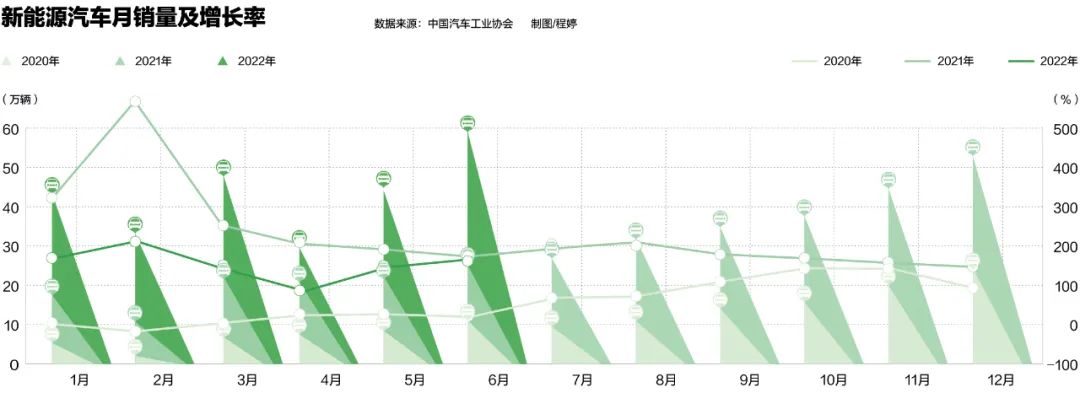

China's power batteries have excellent performance regardless of the volume or technical level.
According to data from the 2022 World Power Battery Conference: As of the end of June this year, China's power battery installed capacity reached 531.9GWh, maintaining a global leader. From the data in 2021, China's power battery installed capacity reached 154.5GWh, accounting for about 50 % of the global installed capacity. Among the top ten companies in global power battery installed capacity, Chinese companies occupy 6 seats with a market share of about 48 %. In the first half of this year, China's power battery vehicle volume was 110.1GWh, a year -on -year increase of 109.8 %. Among them, the amount of triple lithium battery was 41.4 %, an increase of 51.2 % year -on -year; the amount of lithium iron phosphate battery was 58.5 %, an increase of 189.7 % year -on -year.
At the same time, China's power battery technology level has been rapidly improved, and the complete industrial chain covering basic materials, battery cells, battery systems, and manufacturing equipment has been formed. The global market share of negative electrode materials has reached 90 %, and the independent supply rate of diaphragm materials exceeds 90 %. System energy density of ternary lithium batteries and lithium iron phosphate batteries is internationally leading internationally. As of now, the number of Chinese power battery standards has accounted for more than 40 % of the global proportion.
"Although the battery is not invented by China, it should be said that China has achieved curve overtaking." Sun Jinhua, a professor at the University of Science and Technology of China and chief scientist of the National "973" plan, said: "At present, China's battery technology and battery output have reached the reach With 60 % of the global total production capacity, the future development goals are high energy density, high safety, long life, and low cost. "
In the field of power batteries, companies such as Ningde and BYD became leaders of the industry. Data show that the global power battery installed capacity was 157.4GWh from January to May 2022. Among them, the Ningde Times ranked the list in the list, and the power battery installed capacity was 53.3GWh from January to May. In the first half of this year, the global installed market share of Ningde Times reached 34 %, which was 28 % last year. At the same time, BYD's market share in June 2022 was 18.53 %, ranking second in China's power battery vehicle. At present, the blade batteries produced by BYD are almost all used in their own models. In other words, with a new energy vehicle manufacturer of BYD, the amount of carrier battery has accounted for nearly 20 % of the Chinese market.
It is worth noting that although foreign brands are currently developing relatively slowly in the field of new energy vehicles, they are already accelerating the layout. From the perspective of the entire industrial chain, the shortage of key resources in the upstream and downstream, the midstream technology is not perfect, and the increase in international competitiveness in the downstream requires the vigorous vigilance of Chinese brands.
At present, the distribution of lithium, cobalt, and nickel resources in the world is high and the characteristics of oligopoly monopoly. Although China's lithium resources are rich, but the endowment is not good, nickel and cobalt resources are scarce. High degree.
In April 2021, BYD's car welding production line in Xi'an Factory in Shaanxi. Photo/Visual China
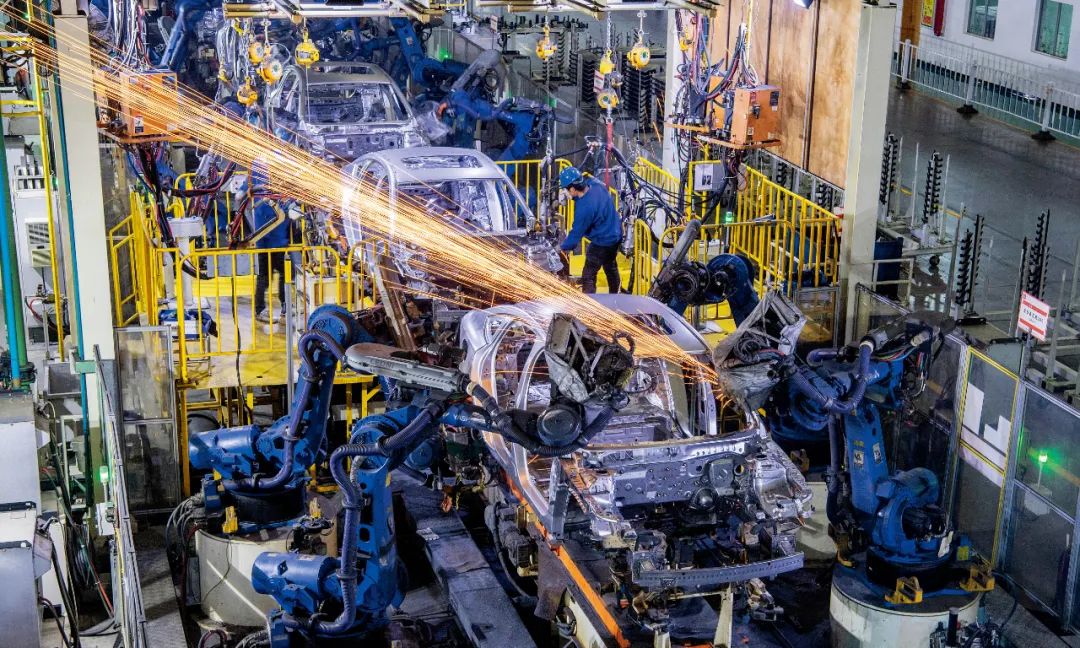
In addition, at some technical levels, the strength of foreign companies cannot be underestimated. Senior people engaged in the research of power battery industry told China News Weekly that in terms of global battery patents in full solid state, Japan and South Korea have obvious advantages; In terms of manufacturing, Europe also has considerable advantages.
Data from Patent Result, an investigation agency engaged in patent survey and analysis, showed that from 2000 to March 2022, of the top ten patents in Full Solith cells, there were 6 Japanese companies and 4 Korean companies, and none of Chinese companies were on the list.
The top five companies in patents are Toyota, Panasonic Holdings (HD), out of Guangxing Production, Samsung Electronics, and Murata Production Office. Except for Samsung Electronics, the remaining four are Japanese companies. Among them, Toyota, ranked first, reached 1,331 patents, three times the second place.
Ouyang Minggao, an academician of the Chinese Academy of Sciences, said at the 2022 World Power Battery Conference that the European Union proposed the Power Battery 2030 Plan, targeting the new generation of smart batteries. The Chinese power battery industry should increase its efforts to achieve the intelligent battery's full -chain intelligentization of power batteries from material selection, battery design, manufacturing, use, and recycling.
At the same time, in the future development path of electric vehicles, intelligence has become the next key point of competition. At present, in the field of intelligent driving, Tesla uses a pure visual camera route, while more domestic companies have chosen the "composite perception system" of millimeter wave radar, lidar, camera, and high -precision map combination. But in the field of laser radar, China is still the role of chaser.
Li Yuan, CEO of Lidar Enterprise Beiwai, told China News Weekly that when China was listed without lidar companies, the United States already had a number of lidar listed companies with a market value of billions of dollars. "Any patent about vision and unmanned driving, the United States currently ranks first, accounting for almost 50 %, Japan accounts for 20 %, and China accounts for only about 7 %, which is almost 10 times the difference." The current gap is gradually narrowing. "On the other hand, in the field of laser radar, this perception technology that has only started in the past two years has no gap between China and the United States, and the number of patents in China has grown very fast in recent years. China wants to overtake a curve. Develop the next generation of sensors. "
At the same time, China's computing power and smart chips still rely on American companies (Qualcomm, Mobileye), and MCUs rely on European companies (NXP, Bosch, etc.). "Although the domestic and sales of new energy vehicles in 2021 have exceeded 3.5 million vehicles, shortcomings such as chips, power batteries, operating systems, infrastructures and other industrial shortcomings still exist," said An Qingheng, director of the China Automobile Industry Consulting Committee.
The market is hot, and the profit is very small
It is worth noting that in the field of new energy vehicles, only Tesla and BYD are in profitable in the field of new energy vehicles, and the profitability of the power battery field is not optimistic.
Tesla is currently the most profitable company in the field of new energy vehicles. According to Tesla's second quarter financial report, its revenue and profits rose sharply, achieving revenue of 16.934 billion US dollars (about RMB 114.257 billion), an increase of 42 % year -on -year; GAAP operating profit was 2.5 billion US dollars (about 16.867 billion yuan, about 16.867 billion yuan ), Achieved 14.6 % of the industry's highest level of operating profit margin.
Tesla can achieve today's performance, which is inseparable from its development in the Chinese market. According to data from the Federation of Federation, in June 2022, the monthly sales volume of 78,906 vehicles in Tesla Shanghai Super Factory once again set a historical record again. Tesla China told China News Weekly that the Tesla Shanghai Super Factory achieved a total of 97,182 vehicles in the first half of this year, and the vehicles were exported to developed countries such as Europe, Australia, Japan, and Singapore. At the second quarter financial report, Musk praised the contribution of the Chinese team of Tesla.
In China, BYD has a solo show. In the first half of the year, the cumulative sales of more than 641,000 units, or even more than 564,000 vehicles in Tesla. Data show that BYD is expected to belong to shareholders of listed companies in the first half of 2022 to a net profit of 2.8 billion yuan to 3.6 billion yuan, an increase of 138.59 % to 206.76 % year -on -year. BYD is currently the best new energy vehicle company in China. Although it has achieved profitability, there is still a large gap compared with Tesla's profitability.
In addition, most new energy vehicle companies are still in a state of losing money. Among the most noticeable new vehicle manufacturers, the total revenue in the first quarter of 2022 was 9.56 billion yuan, a net loss of 10.9 million yuan; Xiaopeng lost 1.731 billion yuan in the first quarter; 9.911 billion yuan, net loss reached 1.783 billion yuan, an increase of 295.56 % year -on -year. On July 21, Zeng Qinghong, chairman of GAC Group, complained at the 2022 World Power Battery Conference that the price of power batteries was too high, and most new energy vehicle companies were in a loss state. Because half of the power batteries needed by GAC Group were provided by Ningde Times, Zeng Qinghong even laughed at himself. "At present, the cost of power batteries accounts for 60 % of the total cost of the car. Aren't we working for Ningde Times?"
Wu Kai, chief scientist in Ningde Times, responded the next day: "Although our company has not lost money this year, it is basically struggling at the edge of a little profitable. Ningde Times revenue was 48.6 billion yuan, an increase of 153 % year -on -year; net profit was nearly 1.5 billion yuan, a decrease of 23 %. This is the first quarter performance of the company's first quarter after the third quarter of 2020. It was not just a test of the decline in profits in Ningde Times. Guoxuan Hi -Tech's net profit in the first quarter of this year was 32.2 million yuan, a year -on -year decrease of more than 30 %; Xinwangda's net profit in the first quarter was 94.92 million yuan, a year -on -year decrease of 26 %.
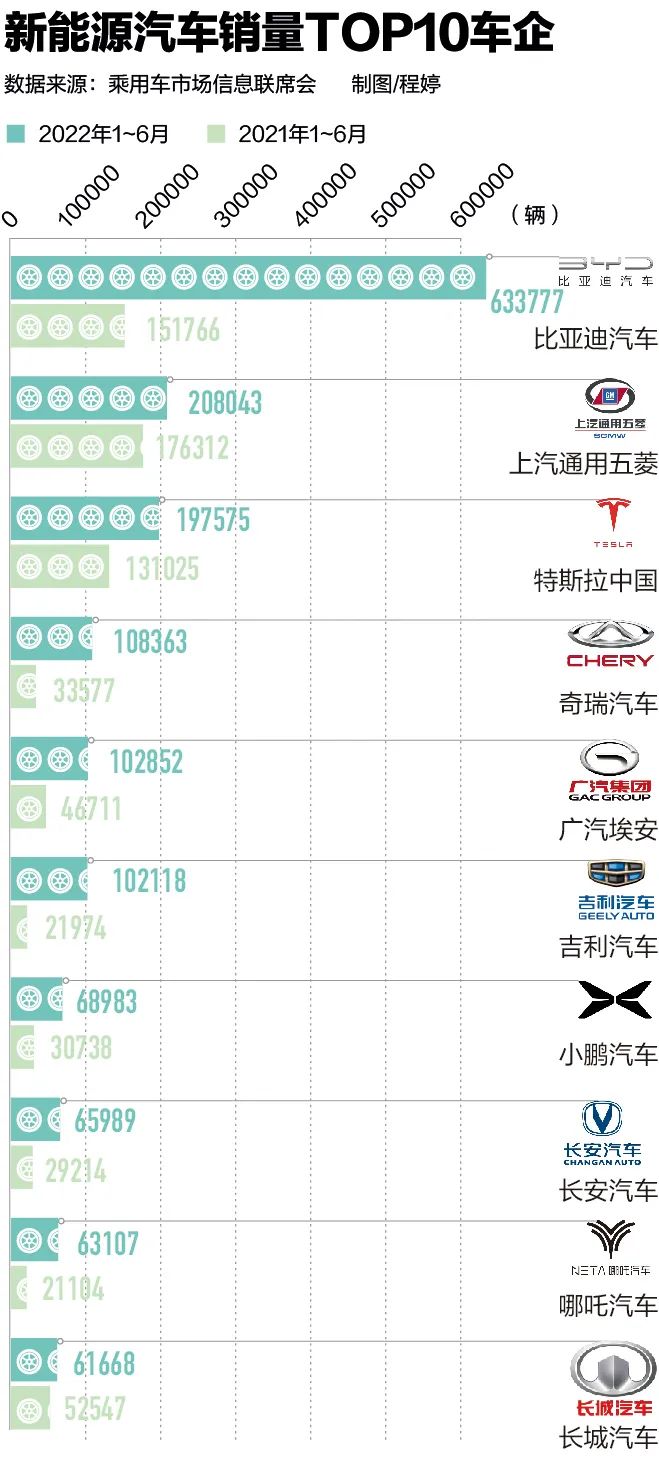
"At present, the power battery industry is so hot, but the battery plant does not have a good profit." Some people of power battery companies told "China News Weekly" that since the second half of last year, the price increase of lithium carbonate has almost increased by more than 10 times, and This leads to huge pressure in battery factories. "There is no profit, indicating that this industry is problematic." Dongzhi Futures pointed out that the bottleneck of the current supply side of the lithium battery industry chain is still on the upstream resource side, and the industry profits are accelerating upstream concentration.
Coordinate counterattack, beware of suppression
Facing the rapid rise of China's new energy vehicle market and a full competitive environment, foreign and joint venture brands naturally will not ignore it. Cui Dongshu said that the basic ability of the joint venture brand itself is very strong. With the transformation of electrification, its competitiveness of new energy models is also increasing. Such as the leader of the traditional car field, BMW, Mercedes, Audi, etc., all accelerated electrifying transformation and increased their layout in the Chinese market.
Among traditional car companies, Volkswagen's electrification is relatively more active earlier. Volkswagen is continuously optimizing the layout of the product, developing the MEB pure electric platform for manufacturing electric vehicles, and continuously released a variety of models, including ID.3, including ID.3 , ID.4, ID.6, etc., covering different market segments, the north -south Volkswagen has completed the release of 5 new ID. products last year to meet the diverse consumer demand.
On July 29, the staff worked on a power battery production line within an enterprise in the Economic Development Zone of Hefei City, Anhui. Picture/Xinhua
Liu Hongtao, deputy general manager of FAW-Volkswagen Sales Co., Ltd. (sales), said in an interview with "China News Weekly" that "ID.CROZZ family single monthly sales exceeded 9,000 units. This result has reached our expectations. In fact, five, five In June, the production and supply of ID. The production and supply of models is still very tight, and it is difficult to find a car in the terminal market. It can be said that our new energy transformation has achieved initial success. "
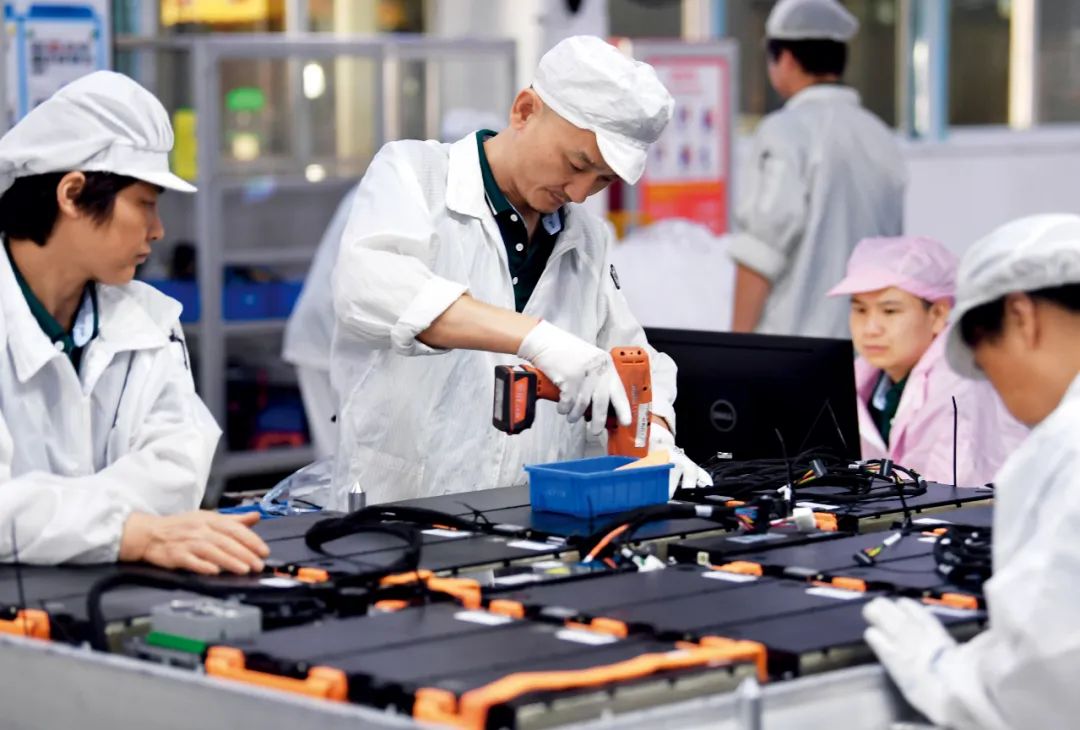
As a traditional luxury brand giant, BMW, Mercedes -Benz, and Audi are also constantly accelerating the pace of electrification transformation. On June 23, the large -scale upgrade project (referred to as the Rida factory) of the BMW BMW production base (referred to as the Rida Factory) was officially opened. The total investment of the project is 15 billion yuan, which is BMW's largest single investment in China. The BMW Group is responsible for producing Director Nordkovic to tell China News Weekly that the Rida plant has a production system for electrifying, and can achieve up to 100 % of the production capacity of electric vehicle. "One of the three cars in the world selling the BMW Group is delivered to Chinese customers. We are now facing huge challenges, and the BMW iFactory strategy will further strengthen BMW's innovation and leadership in the field of automobile manufacturing, especially new Li Li The factory is the best example of the BMW iFactory production strategy. "
At the same time, Mercedes -Benz, Audi, etc. also settled in: On June 13, Mercedes -Benz's 4 million vehicles produced in China were offline at the Shunyi Factory. The new car is based on the new EQE created by Mercedes -Benz's new -generation pure electric platform EVA 2.0. This model will be listed within the year. Beijing Mercedes -Benz's electrification transition to the naked eye can be accelerated.
On June 28, the Audi FAW New Energy Vehicle Project started in Changchun. This is the first production base for Audi to produce pure electric models in China. As a result, Audi officially opened a pure electric model project based on the localized production of the PPE platform in the Chinese market. On this platform, the latest high -end electric vehicle models of the next generation of Audi will be born.
In addition to the accelerated transformation of the enterprise level, in the international field, China's overtaking in the field of new energy vehicles has attracted the attention of traditional automotive powers such as Europe and the United States, and the situation of international competition is becoming increasingly complicated.
In May 2022, the US Securities and Exchange Commission (SEC) successively added 88 Chinese stocks including ideal automobiles, Xiaopeng Automobile, Weilai Automobile to the "pre -delivery list" to suppress the rapid rise of China's new energy vehicle industry.
Earlier, the Ministry of Energy released the first comprehensive strategy of protecting the US clean energy supply chain "Protecting the Supply Chain to Realize the Clean Energy Transformation Strategy" on February 24, which aims to establish a safe, tough and diverse domestic energy industry industry industry The foundation, thereby establishing the United States' global leaders in the field of clean energy manufacturing and innovation. Metabilities include: provide 44 million US dollars for key mineral resource sustainable development plans to increase the supply of resources such as copper, nickel, lithium, cobalt, rare earth elements; Established four clean hydrogen centers for 100 million US dollars. In the newly issued administrative instructions, the Biden government clearly stated that key components such as batteries and semiconductors required for new energy vehicles must be made in the United States. The EU countries have also launched the increasingly stringent carbon emissions regulatory policy. They have taken the opportunity to propose clear requirements for low -carbon production, material recycling, and LCA (carbon emissions of battery life cycle) to Chinese new energy vehicle companies. Apply tremendous pressure.
On June 7, 2022, the US Democratic Senator submitted a legislative proposal to the Senate Financial Commission to establish a carbon border regulation mechanism (CBAM, commonly known as carbon tariff), called the Clean Competition Act (CCA). Essence The basic logic of CCA is that the average carbon content of American products is the benchmark line, and the carbon content of imported products with the reference line and American products are levied carbon fees. "The setting of carbon tax will become more and more stringent in 2025. By calculating, the proportion of emissions in the upstream supply chain of one of our products accounts for 84.6 %." It mainly reduces carbon emissions from three aspects: factory construction, energy consumption management and improvement of production efficiency.
Coincidentally, under the "Russian and Ukraine Conflict", after Europe and the United States kicked Russia out of the SWIFT system, the trading of non -ferrous metals (such as nickel) with strong financial attributes became difficult, which affected the market supply and prices of non -ferrous metals such as nickel. China is the largest consumer of battery -class metal nickel, and Chinese manufacturers occupy 70 % of the world's power battery market. Nickel's market supply and price have significantly impact the Chinese car companies and battery industries.
In the international market, according to market research agencies Insideevs in 2021, Germany is the largest new energy vehicle market in the world except China. It ranks first in Europe with a sales volume of 690,100 units, an increase of 72.7 % year -on -year. Under the guidance of huge consumer markets, traditional German car companies have begun to transform. In addition, the United States sold 419,000 new energy vehicles in the first half of this year, a year -on -year growth of 50 %.
In fact, the competition in the new energy vehicle market is still a long -distance running. China is currently leading due to the earliest departure. But the schedule is long, and the Chinese brand should also see that the traditional vehicle power has begun to fight against the field of new energy vehicles. At present, China has formed a scale in the field of new energy vehicles, but has not yet formed absolute leading quality and technological advantages. For China's new energy vehicle industry, in order to keep the leading advantage and defend the head status, you still need to face up to your own advantages and deficiencies. Only by continuously complement the shortcomings can you be "overtaked" and this long. In the competition, he always lives in the leading position.
Send 2022.8.8 Total Issue 1055 "China News Weekly" magazine
Magazine title: Behind the new energy vehicle "change of the road"
Reporter: Liu Shanshan
Operation editor: Xiao Ran
- END -
The Consulate General in Barcelona reminds Chinese citizens to be guarded by highway robbery
As the summer comes, the Spain's Catalan Autonomous Region (referred to as the Canadian Zone) enters the peak tourist season, which has increased frequency of various types of stealing events involv...
Every day Chewn: Lantu officially landed in Norway, Huawei Hubble invested in Suzhou Qixin
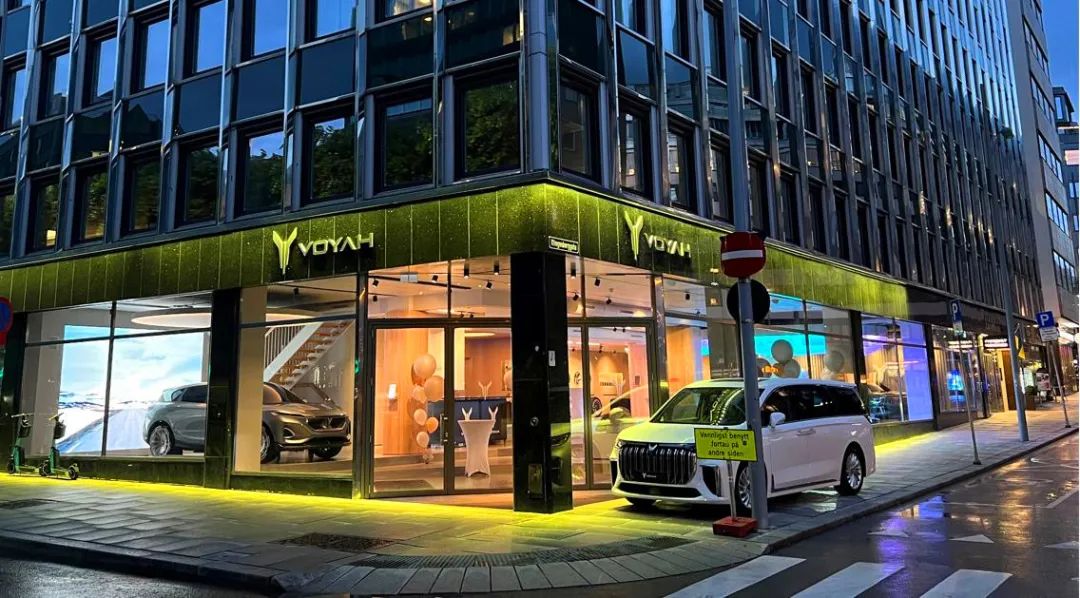
[Understand the car heard every day] Let's take a look at some major events in the...